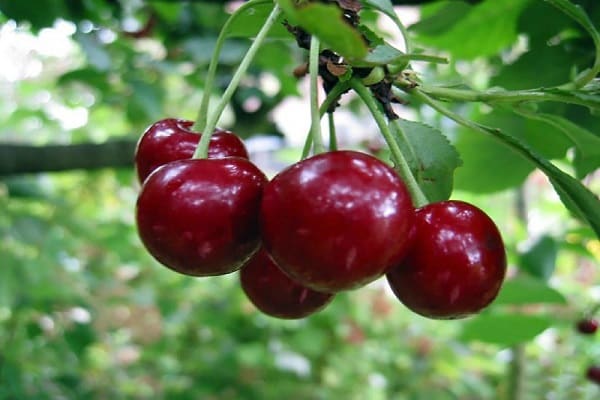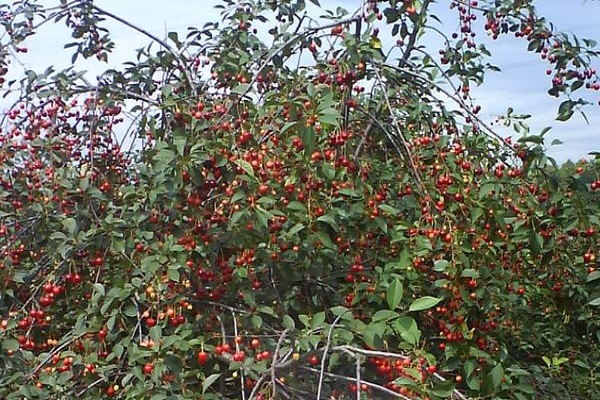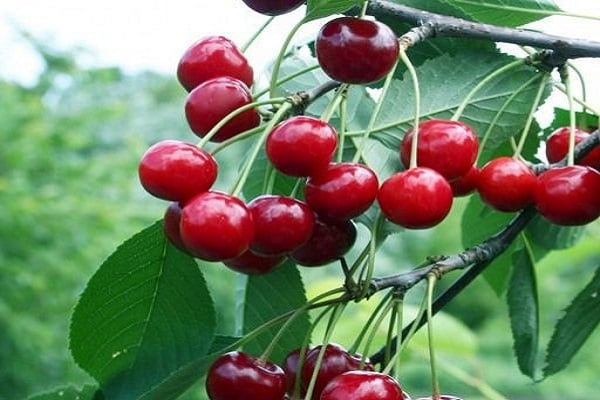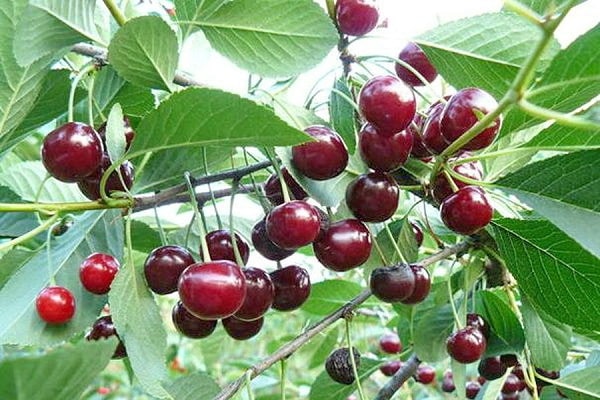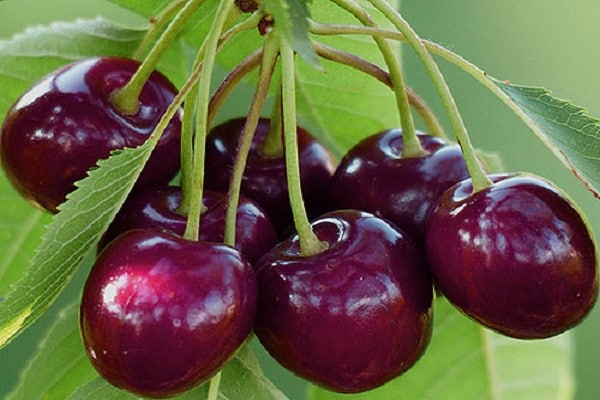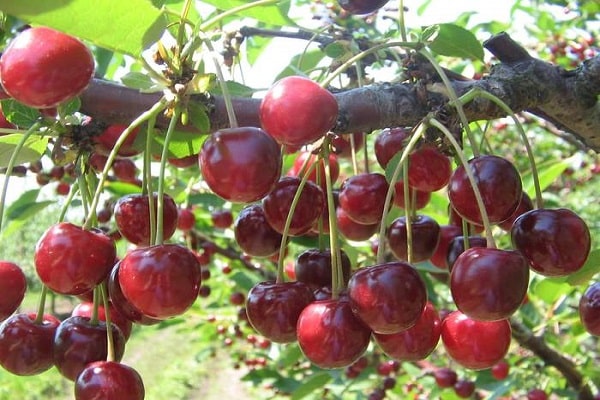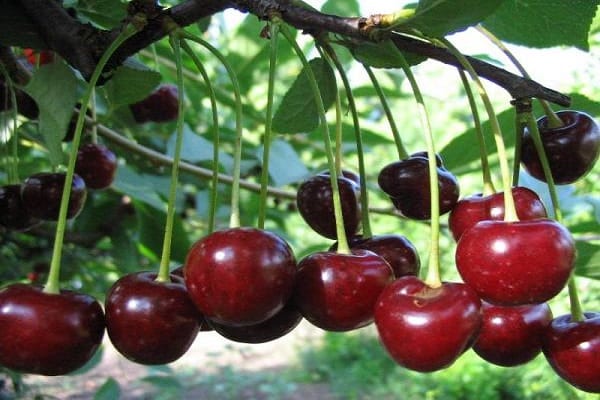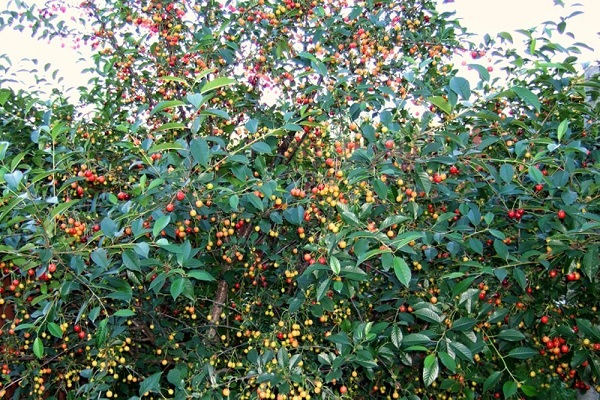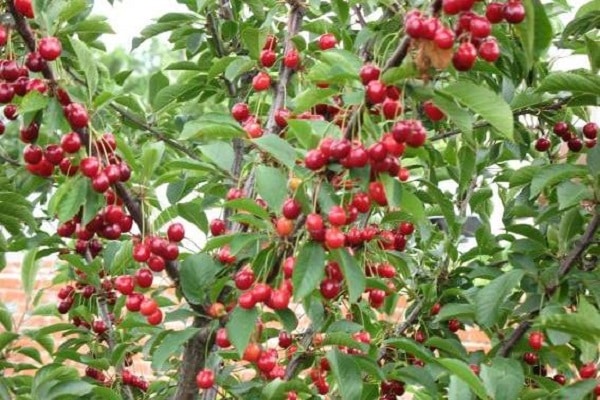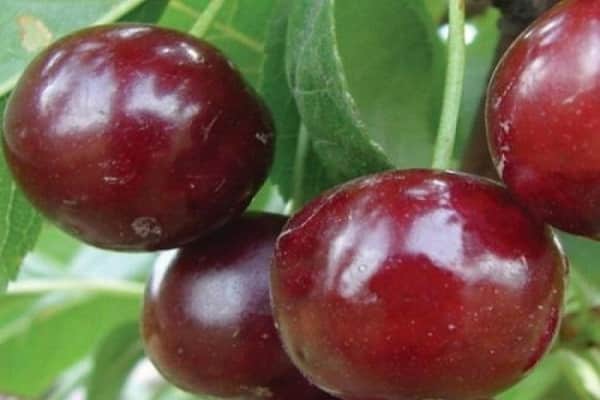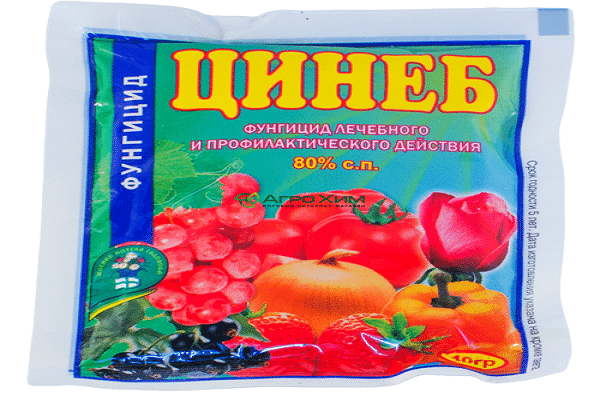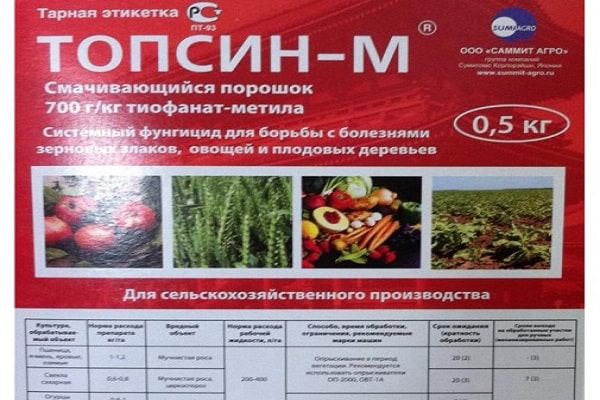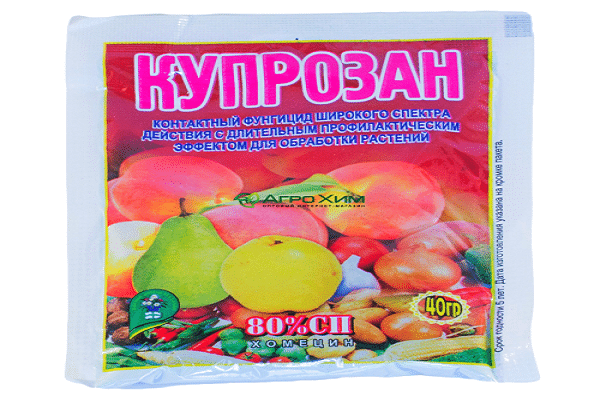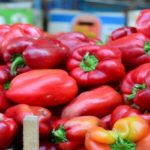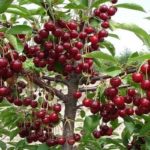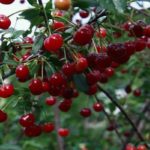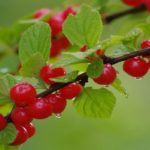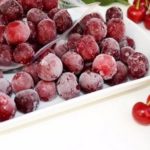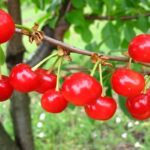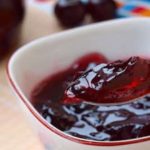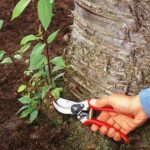Among the varieties of cherries, you need to choose crops with different ripening periods for growing in the garden. It is also necessary to take into account the climatic conditions of growth and ease of care. Such qualities are inherent in the Molodezhnaya cherry, which was bred by breeders in the early 90s of the last century. The culture is suitable for gardeners in the Central region. Cherries are preferred for growing in the Urals and Siberia.
Description of the Molodezhnaya cherry
The bush-like variety of Molodezhnaya cherry has a small height of 2-2.5 meters. The branches lowered to the ground form a compact round crown. Thanks to this, the bush can claim a place in small gardens.
On branches covered with brownish-brown bark, leaves of an oval structure with crenate edges hang densely. They are dark green above and lighter below. Cherry blossoms begin after the 10th of May, when the bush is covered with snow-white inflorescences, each of which has 3-7 flowers with a diameter of 3 centimeters. The pistils and stamens of cherries are the same in height, so pollination occurs by itself.
The description of the variety also includes the characteristics of the berries. It is noted that cherry fruits:
- large, weighing up to 4-5 grams;
- burgundy color at technical maturity;
- have juicy and dense pulp;
- the taste is sweet, with slight sourness, without astringent qualities;
- fragrant.
Like the common cherry, the crop is strewn with ripe berries in the second half of July. The yield of the variety increases as the bush matures, growing conditions and care rules improve. From one bush the harvest reaches 12-15 kilograms of berries.
The variety bears fruit every year. A special feature of the fruit is that the stone is easily separated from the pulp. Dark red aromatic juice is squeezed out of them.
Characteristics of the variety
The full characteristics of the Molodezhnaya cherry variety include the fact that the culture:
- Drought resistant. It easily tolerates high summer temperatures and can do without watering. But after planting the tree and during the fruit formation period, it is necessary to water the bushes.
- Frost-resistant. There is no need to cover the trees for the winter. They easily tolerate low air temperatures.
- Self-fertile. The variety does not need 40% pollinators. But it is better to plant Vuzovskaya, Lyubskaya, Turgenevskaya cherries nearby. Molodezhnaya itself plays the role of a pollinator for late-ripening crops.
- High-yielding. The number of fruits depends on the age of the cherry. Starting to produce berries from the 2-3rd year of life, the crop bears fruit for 15-20 years.Increased yields depend on regular pruning.
- Moderately resistant to fungal diseases. The Molodezhnaya variety is affected by moniliosis and coccomycosis more in hot and humid summers.
- Universal to use. Desserts, drinks, and juice are prepared from ripe fruits. The berries are suitable for use as pie filling and cake decoration. Cherry preserves, jams and marmalade are delicious.
Fresh cherry fruits can be stored for 2 months if the berries are collected by cutting, preserving the stalk. Storage containers are lined with parchment paper and placed in basements with a temperature of +2 or +4 degrees, well ventilated.
Planting and care
Despite the ability to produce good yields, the cherry variety will reduce its high performance if the young tree is planted incorrectly. The growth of the bush is influenced by the choice of location on the site for the crop.
For Molodezhnaya cherry, it is important that the area for it be:
- protected from wind and drafts;
- illuminated by the sun;
- on a hill, 1.5 meters above groundwater;
- with neutral acidity, sandy loam soils.
A seedling is purchased or prepared with a height of 70 centimeters to 1 meter. Pay attention to the root system, its elasticity and quality. The length of the roots should reach 15 centimeters. The seedling looks healthy if it has no damage to the bark or branches, and the leaves are juicy green.
Planting cherries begins by preparing the hole. It is dug out 2 months before planting, 50-60 centimeters wide and 40 deep. The distance between planting holes reaches 3-2 meters. Be sure to apply fertilizer. Suitable humus (2 buckets per pit), superphosphate (175 to 250 grams), potassium salt (30-50 grams).For acidic soils, slaked lime is needed. 200 grams is enough.
Before adding fertilizers to the pit, they must be mixed with soil. As soon as the hole is two-thirds full, a mound of nutrient soil is poured in the middle. The seedling is installed in the center, determining the location of the root collar. Holding the bush with your hand, add soil, occasionally shaking the seedling. In this case, the soil will penetrate better between the roots.
At the end of the procedure, the soil around the tree trunk is compacted. Be sure to make a roller, highlighting the boundaries of the tree trunk circle. Water the seedlings abundantly, taking 2-3 buckets of water per hole. It is useful to then add a layer of mulch of 8-10 centimeters.
The best time to plant cherries will be the beginning of May or October. You can plant cherries and apple trees nearby. But cherries don’t like being next to currants.
Caring for plantings of the Molodezhnaya stone fruit variety consists of:
- bush formation;
- feeding;
- glaze;
- loosening the soil.
Cherry pruning affects the crop yield. The procedure is carried out in the spring, removing diseased and damaged branches. Root shoots are removed, leaving up to 12-15 stems with well-developed buds. Old shoots, on which dry twigs appear and produce small berries, are cut to the ground.
Mulching the tree trunk circle is carried out constantly if the summer is dry. It is better to apply a layer of humus directly on the snow. Then the moisture will be retained better. In the fall, fertilizer is applied to the ground. You should dig carefully so as not to damage the roots. At the same time, fertilizers are applied in the form of superphosphate in the amount of 25 grams, potassium salt - 10 grams per 1 square meter.
In the summer, the tree trunk circle is constantly loosened with a garden fork or rake.In the spring, fertilizers containing nitrogen are added for loosening.
They also feed with mullein, diluting it in water in a ratio of 1:5, and with bird droppings - 1:12. The first time you need to feed it is when the buds are blooming. Then organic matter is needed at the time when the cherry blossoms. In August, it is advisable to add phosphorus-potassium mixtures. An infusion of wood ash, prepared at the rate of 50 grams per 10 liters of water, is also suitable. Molodezhnaya cherry responds well to the application of fluff lime every 3-5 years. It is optimal to take 300 grams of lime per 1 square meter.
The cherry harvest depends on watering. During the summer, if it is hot for a long time, you need to water 5-6 times per season.
Spring frosts can damage young trees, so to protect the cherries they light smoke piles. Protection is used during the night, when the temperature drops to +2 degrees. The operation is completed 2 hours after sunrise. Spraying the bushes with water and abundantly watering the trees will also help.
During winter, the cherry trees are covered with snow up to 50-70 centimeters high.
It is also important to protect Molodezhnaya cherries from diseases, since they have average resistance to fungal diseases.
Diseases of the variety
Pathogenic fungi often attack Molodezhnaya cherries, becoming especially active in warm and humid summers.
Gray rot, or moniliosis, is easily recognized by the drying and blackening of shoots and foliage. The berries are also damaged by rot. Gray mold appears on them, in which fungal spores are hidden. If it starts to rain and the air temperature drops sharply, the disease spreads quickly, affecting the neighbors of the diseased tree. If signs of infection are detected, it is necessary to remove the damaged parts and fruits and destroy them.
To prevent the tree from dying completely, you need to start fighting the moniliosis fungus in time. As soon as dried branches and leaves and flower buds are noticed on the bushes, treat the crown with a 3% solution of Bordeaux mixture. The trunk of a damaged bush is whitened with lime with the addition of copper sulfate. Treatment is also carried out with chemicals: “Zineb”, “Topsin-M”, “Kuprozan”. Spray 3 times with an interval of 12-15 days. Among biological preparations, Fitosporin is effective.
If reddish dots appear on the leaves, then infection with coccomycosis has begun. As the disease progresses, the spots begin to increase in size, and pinkish or whitish bumps with fungal spores appear on the lower surface of the leaf. After this, the leaf plates turn yellow, curl, and fall off. Both fruits and branches can become infected.
In the spring, before the buds bloom, it is necessary to treat the crown with Bordeaux mixture. In August and autumn it is necessary to spray with copper sulfate. Gardeners also use a solution of wood ash with the addition of laundry soap to combat the disease. To do this, dissolve 1 kilogram of ash in 5 liters of water. Once a week, starting in May, cherries are sprayed with the infusion.
Anthracnose affects many garden crops. The fungus attacks fruits during the ripening period. Lumps with a pink coating are a clear sign of infection. If they appear on the berries, it is necessary to destroy the diseased fruits and spray the bush with the preparation “Poliram”.
Rusty swellings on cherry leaves are also a sign of a fungal infection. Rust causes the berries on the tree to shrink and the leaves to fall off. The disease can be prevented by treating not only with Bordeaux mixture, but also with copper oxychloride.For 1 young tree it is enough to use up to 2 liters of solution, for an adult tree - 2 times more. Processing should not be a one-time process. It is repeated 2-3 times. It is better to do this after harvesting.
Velvety spots on cherry fruits carry pathogenic fungal spores. If nothing is done, the organisms will spread to neighboring plants. In addition to Bordeaux mixture, you can get rid of the first signs of scab with the drug Nitrafen.
In order to prevent the development of fungal diseases, you need to promptly clear the garden of plant debris, burn fallen leaves, and destroy unripe, damaged fruits.


